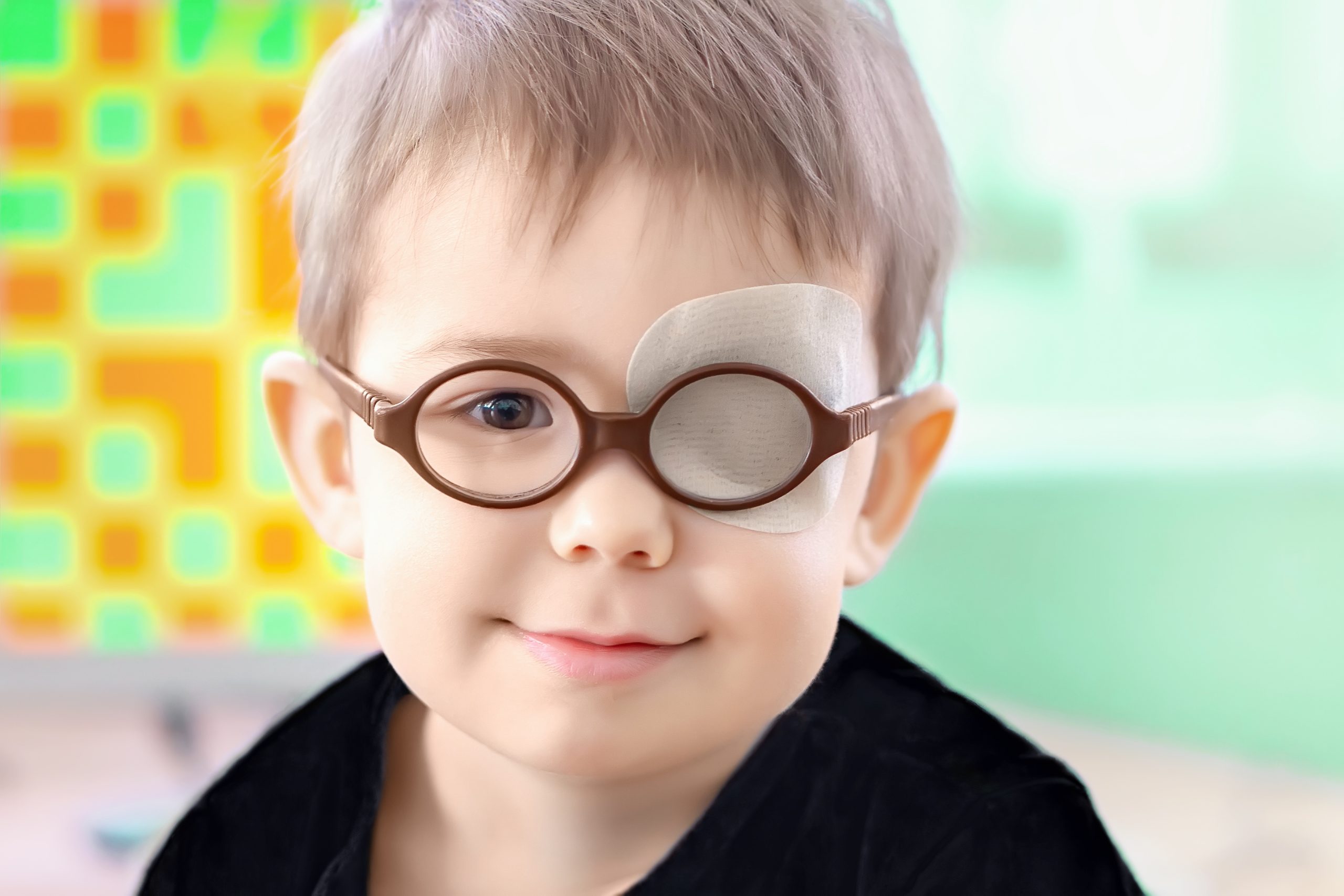Vision Therapy for Ambylopia in Parker, CO
People with amblyopia have reduced vision in one or both eyes that is not caused by eye disease and is not correctable with glasses. A common name for this condition is “lazy eye.” Learn more about amblyopia and how we can treat it using vision therapy and other methods at Good iSight in Parker, Colorado.

What is Amblyopia?
Amblyopia occurs when someone has reduced vision in one or both eyes not caused by eye disease and is not correctable with glasses. Essentially, the brain doesn’t know how to use that eye appropriately even though the eye is healthy. The vision doesn’t fully develop and is weaker than it could be without intervention. Amblyopia can be a result of many factors. If there is a higher prescription in one eye compared to the other (anisometropia), the weaker eye may develop amblyopia, which is called refractive amblyopia. If the prescription is high in both eyes, especially with high astigmatism, both eyes can have reduced vision, which is called bilateral refractive amblyopia. If the vision hasn’t developed appropriately due to one eye being turned in or out, this is called strabismic amblyopia. The last type of amblyopia occurs when one eye is blocked from developing vision due to an obstruction like a congenital cataract. This is called deprivational amblyopia. Amblyopia is the leading cause of vision loss in children.
Symptoms of amblyopia include:
- Eyes that don’t work together
- Blurry vision out of amblyopic eye/ eyes
- One wandering eye
- Head tilting
- Eye squinting
- Winking an eye
- If the patient has one better-seeing eye, oftentimes, the patient has no obvious symptoms!
How Common is Amblyopia?
Amblyopia is quite common in children. According to the National Eye Institute, 3 out of 100 children have amblyopia.
Can Amblyopia be Treated?
Thankfully, amblyopia is very treatable, especially when it is detected early. This is one of the reasons children ages 3-5 should have their vision checked. Although parents may notice symptoms of lazy eye, it can sometimes go unnoticed until an optometrist does a comprehensive eye exam.
What are the Treatment Options for Amblyopia?
Treatment options for amblyopia include:
- Prescription: Patients with amblyopia must have a good prescription for glasses or contact lenses to give the amblyopic eye the best chance of developing vision. Oftentimes, a prescription alone does not fully treat amblyopia.
- Eye patch: The patient is given an eye patch to cover up the strong eye, forcing the child to use the weaker eye to see. Eventually, this treatment will strengthen the weak eye so both eyes can see well again. The downside of this eye treatment is that it is not well tolerated by children and often has very poor compliance. It also doesn’t teach the brain how to use both eyes together appropriately.
- Blurring eye drops: Special eye drops applied to the strong eye temporarily blur that eye’s vision, forcing the brain to use the weaker eye. Sometimes this is not the best option again due to compliance reasons and the inability to use both eyes together.
- Vision therapy: We use an evidence-based program of visual exercises to increase the brain’s development of the weaker or amblyopic eye. Vision therapy is accomplished through a series of in-office appointments and at-home assignments. Most of our activities can reduce stimulation out of the stronger eye without compromising its peripheral vision, which helps the patient to strengthen the weaker eye while also achieving a better understanding of how to use both eyes together appropriately. We also use techniques that are much better tolerated by patients and a lot more fun compared to drops or patching!
Visual Therapy Services that Unlock Your Vision Potential
Book Your Appointment Today
Can Adults be Treated for Amblyopia?
Yes, adults can be treated for amblyopia. Depending on the cause of amblyopia, sometimes the treatment program is longer than with children. Our adult patients generally have to unlearn their visual adaptations to understand how to develop vision in their weaker eyes. Lazy eye treatment for adults is similar to children in that we are doing vision therapy exercises to improve the vision in the weaker eye and improve their function together as two eyes working in unison.
Benefits of Vision Therapy for Amblyopia
Lazy eye treatment only works if the weak eye is encouraged to start seeing better and working more efficiently. If your child does receive vision therapy for a lazy eye, and it is successful, then the likelihood of completely correcting the condition is good. Having the ability to use both eyes efficiently together is what will create the best prognosis for a lazy eye. Your child may still have other vision problems, such as near-sightedness or far-sightedness, but treating amblyopia prevents the child from losing their vision in their weak eye and strengthens their ability to use both eyes together as a team!

Discuss Vision Therapy for Lazy Eyes with an Experienced Optometrist
Dr. Kalynn Good is a compassionate and skilled optometrist who can help you or your child with vision problems, including amblyopia. If you know or suspect you or your child have amblyopia, please schedule an appointment at Good iSight in Parker, Colorado. We can properly diagnose the problem and provide a treatment plan that works for you.
